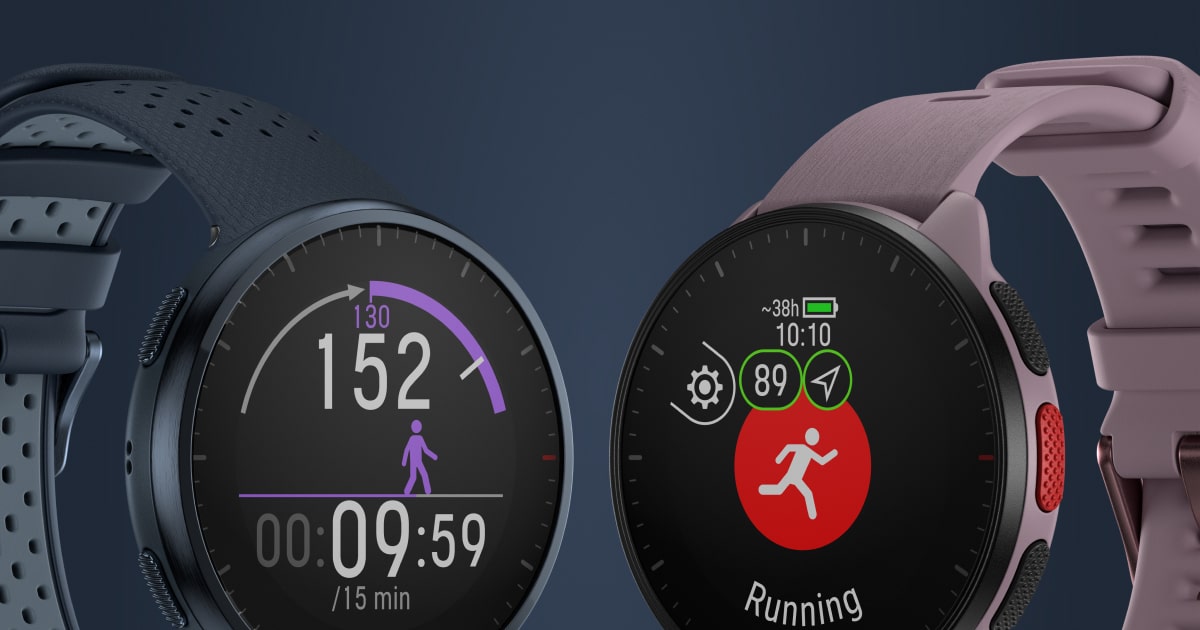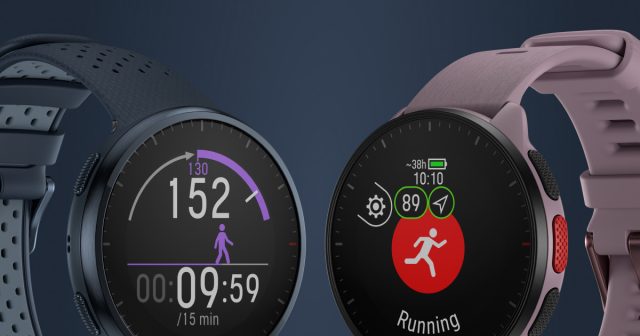Running is a simple sport, but misconceptions and myths might be stopping new runners from lacing up their running shoes, hitting the pavement, and chasing big goals. Even worse, some of these running myths might lead to injury and, ultimately, demotivation to keep on running.
Since we’re celebrating the Global Running Day this week, Jussi Peltonen, Senior Researcher at Polar Research Center, helps us spot and correct seven common running myths. Dive right in ?
1. True or false: Running is for everyone.

True. Barring any pre-existing medical or health issues, everybody can run. Tall, short, broad, thin, young, or old: our bodies are fully updated adapted to running. After all, scientists estimate that we’ve been running for two million years.
At first, not everybody is ready for a marathon or even running a few miles. Running requires some muscle capacity, and therefore injury, overweight, or persisted inactivity, which shrinks relative muscle capacity, may restrict running. The trick is to control pace, as faster running means even more muscle demand. Certainly, there are enough physiological and psychological benefits associated to running that support the idea that we humans are born to run – and not sit at a desk.
“Our bodies are fully adapted to running. Compared to other animals, we aren’t too fast. We’re not sprinters, but we excel in long-distance running. Running improves fitness, but when we run for an extended period, our heart pumps more blood, not only to our muscles, but to our brain too. As a welcomed side effect in addition to fitness, running can improve problem-solving skills, boost creativity, and lift our mood,” says Jussi Peltonen, Senior Researcher at Polar.
2. True or false: Runners don’t walk – they only run.

Simply false. It’s a common misconception to think that if you stop to walk during a run, you cheat. The truth is that incorporating walking workouts into a running program has multiple benefits.
For advanced runners, walking workouts, such as intervals and long walks, are phenomenal recovery day workouts. Brisk walks can help build endurance and give joints and muscles a break, easing the strain caused by running.
For people who doubt their ability to run, walking is an excellent way to get into running. It only requires going for a walk and, at some point, running for a few minutes to let your heart rate rise. Before long, the time spent running will feel easier and cover more miles.
3. True or false: Heart rate training is only for pros.

False. It may seem that heart rate training is complicated and intimidating, that only professional athletes (and data lovers) can dedicate enough time to benefit from it. Heart rate training, however, is simple.
Thanks to the popularity of sports watches, fitness trackers, and chest straps, runners of all abilities can improve their fitness and performance by training to their heart’s beat. All it takes is a device to monitor heart rate while training, and the understanding of personal heart rate zones.
“Heart rate training is easy once you understand certain basic rules,” Jussi Peltonen says. “The first thing to know is that heart rate zones are defined in relation to a person’s maximum heart rate. Usually, everyone can reach zones 1-2 (50-70% of maximum heart rate), zone 3 already requires some effort, and zones 4 and 5 (above 80%) are reserved for interval training. Secondly, unlike muscles, heart rate isn’t controlled by the voluntary nervous system. Consequently, once you start exercising, your heart rate will follow with a delay. This means you can’t expect your heart rate to match your effort level at the beginning of exercise or interval. That’s why it’s recommended to reach the desired heart rate zone at the end of exercise or at the end of interval.”
Heart rate training gives you objective guidance on whether you’re pushing too hard, on the right track, or not doing enough. In other words, it tells you your effort level. When you match effort level and heart rate, you know that you’re training at the right intensity for that type of workout.” Heart rate training can help prevent new runners from exhausting themselves too quickly to enjoy running.
4. True or false: Taking a few days off will hurt your fitness.
False. Contrary to popular belief, some days off from training won’t significantly impact fitness. Studies show that three weeks of complete bed rest result in 15-25% reduction in VO2max levels, but in our daily lives, we rarely have to stay in bed all day.
In the long term, recovery days and days off help improve our fitness. When we exercise regularly, we can’t maintain peak performance all the time. Rest is necessary – think of the tapering period before a big race like a marathon Training productively requires enough hard and intense exercise, but also low-intensity training as a well as rest and recovery. Days off prevent overtraining and allow us to bounce back faster.
To monitor progress, modern sports watches make it possible to estimate how VO2max – the maximum amount of oxygen a person can use during exercise – changes over time, without having to take a test in a lab.
5. True or false: Running marathons makes you healthier.

True. Marathons are a massive physical challenge, pushing our bodies to the verge of being at risk of damage. But even if race day could potentially be harmful, the lifestyle of training for a marathon makes it a healthy pursuit.
If marathon training is done properly, the adaptation process that occurs is highly beneficial. Your muscles and bones become stronger, you probably stay at a healthy weight, and your cardiovascular system is going to be healthier. Plus, chasing big goals can boost your self-esteem and self-confidence.
However, one doesn’t need to run a marathon to enjoy the benefits of running. Studies show that runners have lower risk of all-cause and cardiovascular mortality than non-runners. On average, even just 5 to 10 min/day and at slow speeds (over six minutes per kilometer) is associated with clear reduction in all-cause and cardiovascular mortality (1).
And, if nothing else, running can put a smile on your face: after most runs (8 out of 10 runs). Polar users claim they feel “Great” to “Awesome.”
6. True or false: Every runner gets injured.
False…ish. While it is true that runners are prone to some injuries such as shin splits and plantar fasciitis, there are proven strategies for how to prevent running injuries.
Strength training, mobility exercises, and gradually increasing the intensity of the workouts can reduce the risk of injury. New runners should ensure they don’t do too much, too soon, allowing enough time for their bodies to adapt to the stress caused by running.
Running uphill, for example, can help strengthen other muscle groups (2) to alleviate the strain on the knee – the most loaded joint in running (3). Cross-training exercises and practicing other sports are also essential to becoming a stronger and better runner.
7. True or false: Running on an empty stomach is a good idea.

True… ish. For runners, food is fuel. What a runner eats before a workout directly impacts running performance. This doesn’t mean that a runner should carb up before each workout. In fact, fasted running has some benefits. So, how many calories should a runner eat? And, should you ever run on a empty stomach?
Running on an empty stomach teaches the body to use other energy sources. Instead of always using the glycogen stores, the body learns to obtain the energy it needs from fatty acids.
Also, running produces a lot of heat (that’s why we sweat) and digestion increases heat production even more. On a hot day, going to run on an empty stomach may help to deal with heat.
However, running with depleted glycogen stores makes it difficult to complete a high-quality workout or a high intensity running session, like interval training. Therefore, running on an empty stomach should be reserved low-intensity recovery and easy runs.
Ready to start running?
Now that you know some untold truths about running, you might be ready to fall in love with running. Grab a running watch, put on your shoes, and check out or guide How to Start Running.
Oh, and one more thing. Make sure you avoid these classic mistakes every runner makes.
References
- Lee, Duck-Chul, Russell R. Pate, Carl J. Lavie, Xuemei Sui, Timothy S. Church, and Steven N. Blair. 2014. “Leisure-Time Running Reduces All-Cause and Cardiovascular Mortality Risk.” Journal of the American College of Cardiology 64 (5): 472–81.
- Gent, R. N. van, D. Siem, M. van Middelkoop, A. G. van Os, S. M. A. Bierma-Zeinstra, and B. W. Koes. 2007. “Incidence and Determinants of Lower Extremity Running Injuries in Long Distance Runners: A Systematic Review.”
- Roberts, T. J., and R. A. Belliveau. 2005. “Sources of Mechanical Power for Uphill Running in Humans.” The Journal of Experimental Biology 208 (Pt 10): 1963–70.
If you liked this post, don’t forget to share so that others can find it, too.
Or give it a thumbs up!
I like this article
Please note that the information provided in the Polar Blog articles cannot replace individual advice from health professionals. Please consult your physician before starting a new fitness program.





